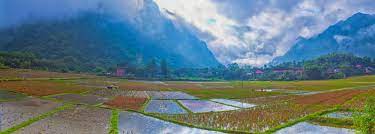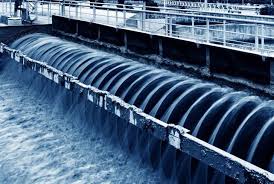Water treatment is any process that improves the quality of water to make it more acceptable for a specific end-use. The end use may be drinking, industrial water supply, irrigation, river flow maintenance, water recreation or many other uses, including being safely returned to the environment.
Water treatment removes contaminants and undesirable components, or reduces their concentration so that the water becomes fit for its desired end-use. Treatment for drinking water production involves the removal of contaminants from raw water to produce water that is pure enough for human consumption without any short term or long term risk of any adverse health effect.
Substances that are removed during the process of drinking water treatment include suspended solids, bacteria, algae, viruses, fungi, and minerals such as iron and manganese.
Read Also : Background to Water Security and Threat to Water Security
The processes involved in removing the contaminants include physical processes such as settling and filtration, chemical processes such as disinfection and coagulation and biological processes such as slow sand filtration.
Measures taken to ensure water quality not only relate to the treatment of the water, but to its conveyance and distribution after treatment. It is therefore common practice to keep residual disinfectants in the treated water to kill bacteriological contamination during distribution.
Water treatment
Clean, safe water is vital for everyday life. Water is essential for health, hygiene and the productivity of our community. The water treatment process may vary slightly at different locations, depending on the technology of the plant and the water it needs to process, but the basic principles are largely the same. This section describes standard water treatment processes.
1. Coagulation/ Flocculation
During coagulation, liquid aluminum sulfate (alum) and/or polymer is added to untreated (raw) water. When mixed with the water, this causes the tiny particles of dirt in the water to stick together or coagulate.
Next, groups of dirt particles stick together to form larger, heavier particles called flocs which are easier to remove by settling or filtration.
2. Sedimentation
As the water and the floc particles progress through the treatment process, they move into sedimentation basins where the water moves slowly, causing the heavy floc particles to settle to the bottom.

Floc which collects on the bottom of the basin is called sludge, and is piped to drying lagoons. In Direct Filtration, the sedimentation step is not included, and the floc is removed by filtration only.
3. Filtration
Water flows through a filter designed to remove particles in the water. The filters are made of layers of sand and gravel, and in some cases, crushed anthracite. Filtration collects the suspended impurities in water and enhances the effectiveness of disinfection. The filters are routinely cleaned by backwashing.
4. Disinfection
Water is disinfected before it enters the distribution system to ensure that any disease-causing bacteria, viruses, and parasites are destroyed.
Chlorine is used because it is a very effective disinfectant, and residual concentrations can be maintained to guard against possible biological contamination in the water distribution system.
5. SludgeDrying
Solids that are collected and settled out of the water by sedimentation and filtration are removed to drying lagoons.
6. Fluoridation
Water fluoridation is the treatment of community water supplies for the purpose of adjusting the concentration of the free fluoride ion to the optimum level sufficient to reduce dental caries.
Read Also : Socio-Political Causes of Water Scarcity Poverty and economic policy
Hunter Water is required to fluoridate water in accordance with the NSW Fluoridation of Public Water Supplies Act 1957.
7. pH Correction
Lime is added to the filtered water to adjust the pH and stabilise the naturally soft water in order to minimize corrosion in the distribution system, and within customers‘ plumbing.

